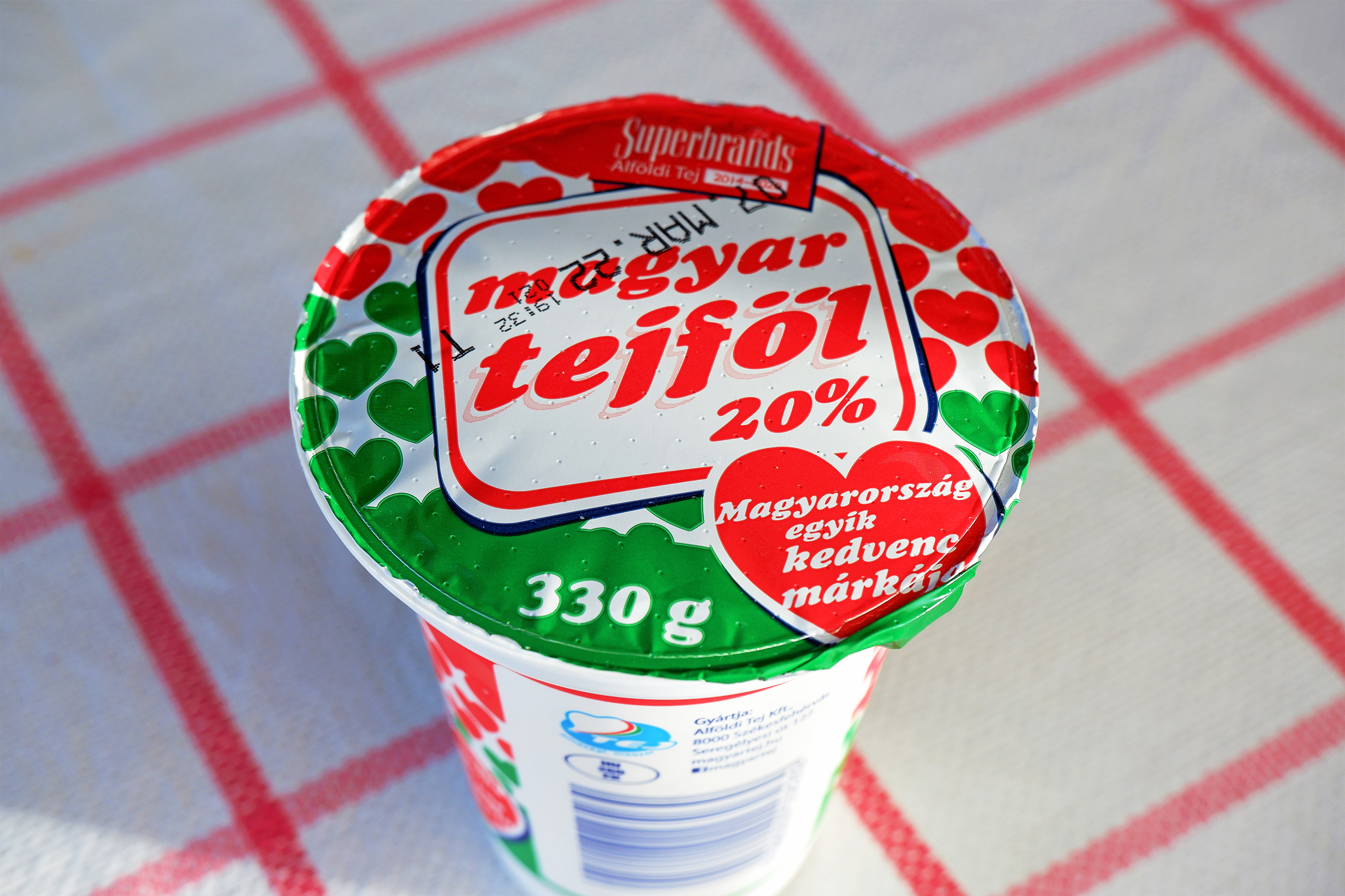Tejföl: Is This the Very Essence of Hungarianness?

Photo by Raketir / Shutterstock.com
Not so long ago, I interviewed the son of the great Hungarian jazz guitarist Gábor Szabó. The musician had escaped to the United States with his family in 1956. His brother had already told me they had embraced America and its culture with open arms and turned their back on “Hungarianness.”
So, I was surprised when Szabó’s son told me he remembered driving around Los Angeles with his father in the 1970s, desperately searching for a tub of sour cream that approximated the taste of the Hungarian tejföl he’d been raised on.
In our house, my partner and her daughter don’t just use tejföl in cooking. They smear it onto bread and crackers, eat it by the spoon, and, for all I know, rub it into their faces as part of their beauty routine.
I, on the other hand, have yet to learn to love tejföl. But that doesn’t stop me being fascinated by the stuff.
One of my backburner projects is a book on the place of tejföl in Hungarian culture, along the lines of such works of genius as Mark Kurlansky’s “Cod: A Biography of the Fish That Changed the World” and Elizabeth David’s masterly “Harvest of the Cold Months: The Social History of Ice and Ices.”
Until my study of tejföl hits the bookstores, I hope you enjoy these notes on a work in progress.
Tejföl is a form of sour cream, which can be traced back to Russia, where they had copied the Mongols’ practice of adding bacteria to mare’s milk to thicken it. Russians call sour cream “smetana.” From Russia, sour cream spread all over Central and Eastern Europe.
American Conquest
Sour cream was introduced to America by immigrants from CEE around the end of the 19th and the start of the 20th century.
Given that a fair number of these immigrants, including Michael Curtiz (born Manó Kaminer in 1886 but, from 1905, known as Mihály Kertész), who moved to the States in 1926 and was the director of “Casablanca,” settled in Los Angeles and helped give birth to the film industry, it’s reasonable to imagine that Szabó found his sour cream. But it probably wouldn’t have been tejföl.
The Hungarian Food Codex (Codex Alimentarius Hungaricus) tells us that tejföl, which translates as “sour cream,” can only be made by adding cream or butter and then a lactic acid bacteria culture to milk. Its fat content must be more than 16% but less than 20%.
What follows is translated from an article in Hungarian by Dr. Bélá Német. I used the power of Google Translate, so please don’t take it as gospel.
After the fat and bacteria culture are added to the milk to ferment it, it’s heated to around 75°F (24°C) in glass containers and homogenized at a pressure of 100-160 bar to prevent foaming and achieve the desired consistency. It’s the bacteria that thickens the milk. The tejföl is heated one last time at temperatures of between 95-100°F (35-38°C) to get rid of any unwanted bacteria, and then it’s ready to be chilled, cold aged and shipped to stores.
Tejföl lends itself to being used in cooking or added to dishes such as gulyás (goulash) because it’s rich enough in fat not to curdle at higher temperatures.
In case you were wondering, the origins of goulash lie in stews eaten by Hungarian shepherds in the 10th century. Meat previously cooked and flavored was dried in the sun and stuffed into bags made from sheep’s stomachs. When the wandering shepherds were hungry, they just added water to make their gulyás.
Paprika-free
These early versions of goulash didn’t include paprika because it wasn’t introduced to Europe until after Columbus brought it back from America in the early part of the 16th century. Somewhat confusingly, given its origins in shepherding, the word gulyás can mean cowboy. “Gulya” means herd of cattle in Hungarian.
Up until the 19th century, the Hungarian Puszta, that area of grassland in the east of Hungary that lies around the River Tisza, was home to vast herds of cattle. From there, they were driven to enormous cattle markets in Moravia, Vienna, Nuremberg and Venice. Some cattle were slaughtered along the way to make goulash. Presumably, the cowboys bought a supply of tejföl with them.
Being rather Budapest-centric in my cultural exploration of Hungary, I had no idea there were Hungarian cowboys. They are called csikós; I won’t inflict another digression on you, but I do wonder if Hungarian cowboy culture is a secret influence on that of the United States.
To be honest, I’ve yet to find significant references to tejföl in Hungarian literature, art, music and film, although I’m sure they exist. So far, I’ve discovered various superstitions that pertain to milk in general.
It was considered bad luck to chop bread into milk using a knife. If a cow gave bloody milk, it was believed that it had been bewitched by a “boszorkány” or witch. A fire caused by lightning could only be put out by milk.
On April 24, the feast day of St. George (the dragon-slayer), Hungarians traditionally carried out magical ceremonies to protect their animals, keep them fertile and ensure they gave plenty of milk. St. George, or more accurately, Szent György, has also been the patron saint of the Hungarian police since 1992.
Tejföl and jazz: a coda
A friend of mine is a superb bass player named Steve Bergendy. I didn’t know this until his father passed away, but Bergendy Jnr. is the son of the great Hungarian jazz composer and musician István Bergendy.
Steve lives most of the time in Mallorca. When we met there this summer, he was chatting with my Hungarian partner when he suddenly became excited. “Listen,” he said, beaming from ear to ear. “I’ve discovered how to make tejföl. You just put a tub of yogurt in the sun for a while, and it ferments!”
This article was first published in the Budapest Business Journal print issue of November 3, 2023.
SUPPORT THE BUDAPEST BUSINESS JOURNAL
Producing journalism that is worthy of the name is a costly business. For 27 years, the publishers, editors and reporters of the Budapest Business Journal have striven to bring you business news that works, information that you can trust, that is factual, accurate and presented without fear or favor.
Newspaper organizations across the globe have struggled to find a business model that allows them to continue to excel, without compromising their ability to perform. Most recently, some have experimented with the idea of involving their most important stakeholders, their readers.
We would like to offer that same opportunity to our readers. We would like to invite you to help us deliver the quality business journalism you require. Hit our Support the BBJ button and you can choose the how much and how often you send us your contributions.










